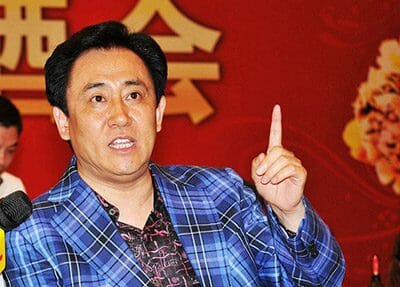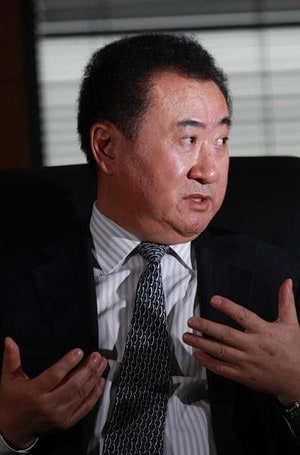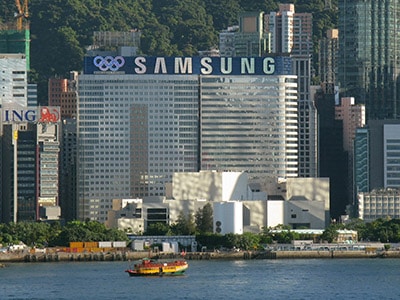
Evergrande boss Xu Jiayin has RMB 297 bil in financial liabilities, plus this jacket
Evergrande Real Estate continued its string of acquisitions this week by agreeing to buy a 52.78 percent stake in Shenzhen-listed real estate developer China Calxon Group for RMB 3.6 billion ($553.8 million), according to a statement by Evergrande to the Hong Kong stock exchange.
The acquisition of the loss-making state-controlled developer will add to RMB 297 billion ($45.8 billion) in debts that Evergrande has built up in one of China’s most aggressive acquisition drives, but also has many analysts guessing that that the developer controlled by billionaire Xu Jiayin will use the domestically listed company to move Evergrande’s main stock listing from Hong Kong to Shenzhen.
Like Dalian Wanda, another high profile Hong Kong-listed mainland developer, Evergrande has watched its stock steadily lose value as international investors grow wary of the risks surrounding China’s slowing real estate markets. And like Wanda, which halted trading in its Hong Kong-listed subsidiary today in preparation for moving its listing to a mainland exchange, Evergrande is eager to take advantage of the higher price to earnings ratios that mainland investors will pay for Chinese companies.
Calxon Acquisition Part of Industry Consolidation

Evergrande has piled up debt by investing in everything from bottled water to plastic surgery resorts
Evergrande, which is China’s second-largest developer by sales, is buying over 952 million Calxon shares at a rate of RMB 3.79 per share from three state-run investors in the Zhejiang-based company; Zhejiang Commercial Group, Zhejiang Guoda Group, and Hangzhou Iron & Steel Group, according to a statement by Evergrande. Calxon was established as a subsidiary of the Zhejiang branch of SASAC, China’s State Asset Supervision and Administration Commission.
The price represents a 10 percent discount to the average trading price of Calxon shares over 30 trading days before the announcement, and Evergrande said that payment for the shares “will be settled by the internal resources of the Company.”
Slowing sales and rising land costs have squeezed many of China’s smaller real estate developers, even mid-cap listed concerns like Calxon.
Earlier this month Calxon announced that, due to declining revenues, it expects to report a net loss of RMB 240 million for the first quarter of 2016, up from a loss of RMB 146.8 million for the first quarter of last year. The company’s chairman resigned in November last year, and Calxon sold a stake in a subsidiary in December after it needed to revise plans for a private share placement to raise more capital.
Analysts speculate that Evergrande would like to use Calxon to shift its main listing away from Hong Kong to the Shenzhen exchange, similar to the way that Wanda has announced that it will move its main listing back to the mainland. However, unlike Wanda, whose assets are mainland-based, Evergrande has used its offshore incorporated entity to invest in a wide range of acquisitions outside of China, which could complicate any repatriation scheme.
Chinese Developers Find Warmer Welcome on Domestic Bourses

Wang Jianlin halted trading in Wanda Commercial Properties today, to prepare for relisting back home
For developers like Evergrande and Wanda, who listed on the Hong Kong exchange as a way to raise capital globally when China’s real estate markets were a cash magnet, the recent performance of their offshore listed stocks has been disappointing.
Evergrande’s stock price in Hong Kong has declined 13.3 percent in 2016, while Dalian Wanda Commercial Properties saw its shares slide by nearly 29 percent this year, before it began making plans to move back to the mainland. By comparison, an index of mainland-listed real estate shares has risen by nearly seven percent since the beginning of February, as the government has underlined its determination to support the property sector and home sales have continued to rise.
Thanks to the diverging fortunes of companies listed on mainland versus the Hong Kong bourse, an index tracking dual-listed companies shows mainland listings trade at an average 34 percent premium to the same company listed in Hong Kong, according to an account today by Reuters.
In its pitch to investors in its scheme to buy back its Hong Kong shares and then re-list on the mainland, Dalian Wanda argued that mainland-listed Chinese companies were enjoying a price to earnings ratio three times that of their overseas-listed counterparts.
Evergrande is China’s Real Estate Debt King

In October Evergrande paid a record $1.6 billion to acquire the Mass Mutual Tower in Hong Kong
If Evergrande is to achieve a high valuation on the mainland, it will have to hope that domestic investors are willing to overlook its industry-leading levels of debt.
Evergrande increased its debt load by 90 percent last year to RMB 297 billion ($45.8 billion), and a recent report by Bloomberg estimated that the developer now has a 6.2 percent chance of defaulting on its debt liabilities within the next year. Now the Calxon acquisition will add RMB 3.6 billion ($553.8 million) to Xu Jiayin’s debt pile.
Many of these liabilities come as a result of Evergrande’s recent expansion scheme, which included the record breaking purchase of the Mass Mutual Tower in Hong Kong’s Wanchai district last year from Joseph Lau’s Chinese Estates for HK$12.5 billion ($1.61 billion).
Even before the Calxon deal, Evergrande’s total debt was equal to 15 times its earnings before interest, taxes, depreciation and amortisation (EBITDA) and the developer has RMB 159 billion ($24.5 billion) in payments to make this year, with another RMB 54.8 billion ($8.4 billion) coming due in 2017, according to Bloomberg.
The Mass Mutual Tower represents a minority portion of Evergrande’s 2015 acquisition spree with the developer purchasing more than $1.7 billion in projects in Chongqing and Chengdu from companies belonging to Lau and other developers. Evergrande also committed $3.2 billion to buy seven mainland projects from Hong Kong’s New World Group in December of last year.
Leave a Reply